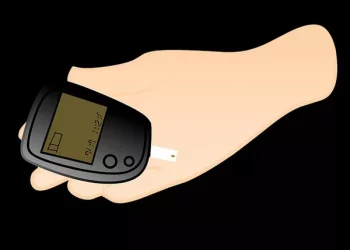Glucometers are essential tools for people with diabetes, providing valuable data to help manage blood glucose levels. However, while they are an important part of diabetes care, glucometers have limitations that can affect their reliability and the quality of health monitoring. The main disadvantage of using a glucometer is the potential for inaccurate readings. These inaccuracies can arise due to various factors, including device calibration, user errors, environmental conditions, and other external influences. This article explores these issues in detail, addressing the challenges associated with glucometer usage and discussing potential alternatives or ways to mitigate these limitations.
Understanding Glucometers and Their Role in Diabetes Management
Before we dive into the disadvantages, it’s crucial to understand how glucometers work and why they are so widely used. A glucometer is a medical device designed to measure blood glucose levels, often used by individuals with diabetes to monitor their condition. The process typically involves the user pricking their finger to obtain a small blood sample, which is then placed onto a test strip. The glucometer analyzes the blood and provides a reading, usually in a matter of seconds.
For individuals with diabetes, this process is vital for managing the disease. Accurate blood glucose readings allow for adjustments in insulin dosages, diet, and exercise, helping to prevent both hypoglycemia (low blood sugar) and hyperglycemia (high blood sugar). However, as convenient as these devices are, they come with inherent limitations that need to be considered for effective diabetes management.
Calibration Issues
One of the primary reasons for inaccurate readings from glucometers is calibration. Calibration is the process of ensuring that a glucometer gives accurate readings by adjusting it to match the known concentration of glucose in blood samples. While manufacturers aim to produce reliable and well-calibrated devices, there can still be variations in accuracy, particularly with devices that require manual calibration. This is especially problematic for individuals who rely heavily on consistent readings to manage their diabetes.
Improper calibration can lead to misleading results, either overstating or underreporting blood glucose levels. For example, a glucometer that is not properly calibrated might show a glucose reading that is significantly higher or lower than the actual level in the bloodstream. This can cause users to either overestimate or underestimate the adjustments needed in their treatment plan, potentially leading to serious health risks.
User Error
Another disadvantage of glucometers lies in the potential for user error. While glucometers are generally designed to be user-friendly, improper use can affect the results. For instance, issues such as inadequate blood samples, improper handling of test strips, or failure to clean the testing site can lead to inaccurate measurements. Even slight variations in technique can result in different readings, making it difficult for individuals to trust the accuracy of their glucometer.
Additionally, environmental factors such as temperature and humidity can affect how a glucometer functions. Most glucometers have a specific temperature range in which they operate optimally, and if the device is exposed to extreme heat or cold, the results may be skewed. For example, a glucometer used in a hot, humid environment might give a lower reading than it should, which could lead to inappropriate treatment decisions.
Test Strip Quality and Expiration Dates
Test strips are another crucial component of glucometer use, and their quality plays a significant role in ensuring accurate blood glucose readings. Over time, test strips can lose their effectiveness, especially if they are not stored properly. Exposure to air, moisture, or extreme temperatures can degrade the chemical reagents on the strips, rendering them less accurate. Additionally, test strips have expiration dates, and using expired strips can result in unreliable readings.
The quality control of test strips is generally good, but variability can still occur between batches. This is particularly problematic for individuals who rely on their glucometer for day-to-day monitoring. Inconsistent strip performance can cause fluctuations in readings, leading to confusion and frustration.
Blood Sample Variability
A major limitation of glucometers is that they measure only a small blood sample. This small sample size can be a disadvantage because blood glucose levels can vary across different parts of the body, and the blood sample obtained from the fingertip may not always accurately reflect the glucose levels in other areas of the body. Some glucometers are capable of measuring blood from alternative sites, such as the forearm, but even then, discrepancies can occur between readings taken from different body parts.
For individuals with diabetes, it is important to have a consistent and representative measurement of their blood glucose levels. Variability in readings due to differences in blood samples can make it difficult to accurately assess whether their blood glucose is within the target range. This issue can be particularly problematic when individuals are trying to make timely decisions about insulin dosages, meals, or physical activity.
Factors Affecting Glucose Readings
Several other factors can influence the accuracy of blood glucose readings, and they are often difficult to account for. These factors include:
Medications: Certain medications can affect blood glucose levels, potentially leading to inaccurate readings. For example, medications like aspirin or high doses of vitamin C can interfere with the chemical reactions in the test strip, leading to a falsely high or low reading.
Diseases and Conditions: Other medical conditions, such as dehydration, anemia, or infections, can impact the accuracy of glucometer readings. For example, dehydration can cause the blood to become more concentrated, potentially leading to higher glucose readings than what is accurate.
Hematocrit Levels: Hematocrit refers to the percentage of red blood cells in the blood. Abnormal hematocrit levels can interfere with the accuracy of blood glucose readings, as they affect the viscosity and composition of the blood. People with higher or lower than normal hematocrit levels may experience discrepancies in their glucometer results.
Meter Variability: Even among different models of glucometers, variability can exist in the accuracy of the readings. Although the U.S. Food and Drug Administration (FDA) has established standards for glucometer performance, not all devices meet these standards equally. Some models are more prone to errors than others, and it is essential for users to research and choose a glucometer that has proven accuracy.
The Risk of False Sense of Security
One of the most concerning disadvantages of using a glucometer is that individuals may develop a false sense of security based on their readings. If a person uses a glucometer and receives a reading that is lower or higher than expected, they might make inappropriate decisions about their treatment, such as skipping insulin or taking additional medication.
A person who relies too heavily on glucometer readings without considering other factors such as symptoms, meal timing, or activity levels may overlook important warning signs of either hyperglycemia or hypoglycemia. This can increase the risk of developing complications such as diabetic ketoacidosis, seizures, or even coma.
The Cost of Frequent Testing
For many people with diabetes, regular blood glucose testing is a necessity to maintain control over their condition. However, the cost of purchasing test strips and lancets for frequent testing can add up over time, creating a financial burden for those with limited resources. Insurance coverage for these supplies can vary, and some individuals may find themselves unable to afford the costs associated with regular testing. The financial strain can result in reduced testing frequency, which in turn increases the risk of inaccurate monitoring and inadequate diabetes management.
Technological Alternatives and Solutions
While glucometers remain the primary tool for blood glucose monitoring, advancements in technology are providing alternatives that aim to address some of these limitations. Continuous glucose monitors (CGMs) are one such alternative that has been gaining popularity in recent years. CGMs continuously measure glucose levels in the interstitial fluid, providing real-time data on glucose fluctuations. Unlike traditional glucometers, CGMs do not require finger pricks, and they offer more consistent readings over time.
However, CGMs are not without their own challenges, including cost, calibration issues, and occasional inaccuracies. While they provide valuable information and can reduce the frequency of fingerstick testing, they are not a perfect solution for everyone.
Conclusion
While glucometers are vital tools for managing diabetes, they come with inherent limitations that cannot be overlooked. Calibration issues, user error, test strip variability, blood sample inconsistency, and other factors can lead to inaccurate readings that may compromise effective diabetes management. These issues, if not addressed properly, can lead to a false sense of security, poor decision-making, and ultimately poorer health outcomes.
It is important for individuals with diabetes to be aware of the potential limitations of their glucometer and to seek guidance from their healthcare providers regarding alternative monitoring methods, such as continuous glucose monitoring. Regular communication with a healthcare team can help mitigate the risks associated with glucometer use and ensure that individuals with diabetes have the tools and knowledge needed to manage their condition effectively.
Related topics:
What Is the Value of Random Blood Sugar Monitoring?
























